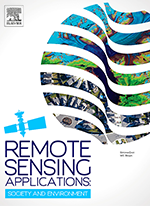
Time series analysis of remote sensing images of vegetation cover change in the Faro-Bénoué-Bouba Ndjidda ecological landscape, north region of Cameroon
Année de Publication: 2022
Auteurs: A. Tanougong, M. Tchamba
Abstract
The Faro-Bénoué-Bouba Ndjidda ecological landscape in the north region of Cameroon consists of a vast network of protected areas with multiple potentials that contribute to the economic and social development of the local populations. Because of all its potentials, the landscape is highly valued and subject to multiple pressures and threats that endanger biodiversity. The main objective of this study is to analyse changes in land use, as well as the factors responsible for these changes. Time series of satellite images from Landsat 1–3 MSS, Landsat 4–5 TM and Landsat 8 OLI-TIRS sensors from the periods 1975, 1996 and 2017 respectively, were used. The supervised classification algorithm using Support Vector Machines (SVM) from Envi 5.3 software was used for image classification. The Land Change Modeler of the Terrset 18 software was used to monitor land use changes. The analyses revealed that in 1975, the landscape had 4,536,647.42 ha of forested land. In 1996 this land was 2,822,597.42 ha and in 2017 it was 1,239,338.60 ha. Between 1975 and 1996, the net loss of the forested land was 1,714,050.01 ha, corresponding to an annual loss of 81,621.43 ha (0.02%/year). Over the period 1996 to 2017, this loss was estimated at 1,583,258.82 ha, corresponding to an annual loss of 75,393.28 ha (0.04%/year). The conversion of these areas to other uses, according to the socio-ecological field survey, is mainly caused by the expansion of agricultural land coupled with the demographic explosion induced by the large migration of populations from Chad and the Central African Republic. The intensification of gold panning and livestock farming also contribute to the regression of the natural vegetation. These pressures and threats are exacerbated by the vulnerability caused by the effects of climate change, especially as the landscape is located in an agropastoral region marked by high inter-annual variability in temperature and rainfall. The results of this research provide a sound basis for considering the sustainable management of this ecological landscape.
